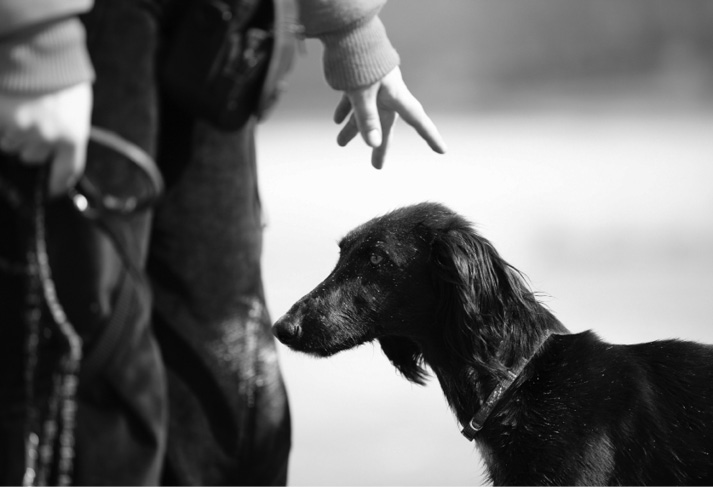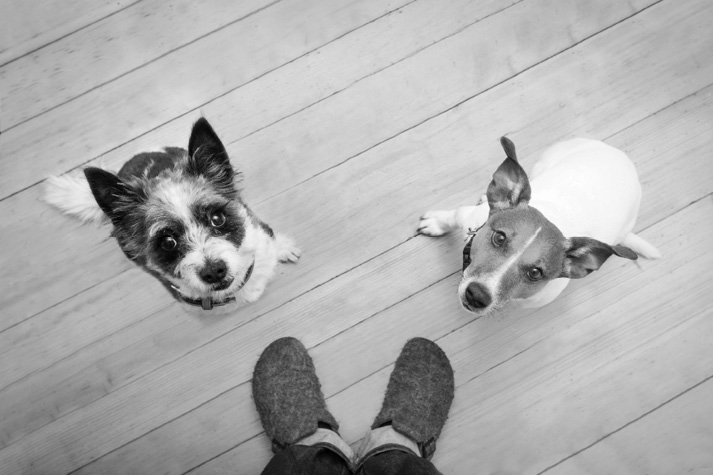
Chapter Thirteen:
Choosing Your Pet Trainer

There are many things you will want to know about a pet trainer or behavior specialist before you hire them. This can range from evaluating their credentials to making sure their training method is right for your pet. Training classes can be instrumental to ensuring you have a great relationship with your pet and that you are able to meet all of their physical needs. However, it can be a frustrating experience if the classes do not seem to be working. Therefore, this chapter is dedicated to helping you understand all the qualifying questions you should ask a trainer before you invest your time and money in them.

Evaluating Trainer Credentials
According to APDT, when selecting a dog trainer, you should be aware that there is no required certification or licensing to become (and market yourself as) a professional dog trainer or behavior counselor. Their website also reminds consumers that not all certifications are the same. The designation of “certified trainer” could mean anything from completing a two-week course to independent testing of knowledge and skill (http://apdt.com).
Dog training certifications vs. certificates
The APDT’s website defines certificate programs as education courses designed to teach dog trainers a set of skills. Certificate programs can include the Karen Pryor Academy, Animal Behavior College, or San Francisco SPCA. On the other hand, a certification is granted by an organization that is independent of the education process and designed to determine if a dog trainer has met a standard set of skill for the profession (http://apdt.com). To maintain a certification, a dog trainer needs to complete continuing education courses. According to the APDT, “Examples of certifications are the CPDT-KA (Certification Council for Professional Dog Trainers) and the CDBC (International Association of Animal Behavior Consultants)” (http://apdt.com).
List of certifications
The APDT has a trainer search option that will only list industry-standard certifications next to a trainer’s name. They recognize certifications that meet the following qualifications:
- The certifying organization is independent with no ties to education/training institutions.
- The certification requires a test to measure experience, skill, and expertise.
- The certification is specific to dog training and behavior.
- The certification requires Continuing Education Units (CEUs) to be maintained.
The following certifications are recognized by the APDT with the criteria listed above:
|
Certification Initials |
Title |
Certifying Body |
|
ACAAB |
Associate Certified Applied Animal Behaviorist |
Animal Behavior Society |
|
ACDBC |
Associate Certified Dog Behavior Consultant |
International Association of Animal Behavior Consultants |
|
CAAB |
Certified Applied Animal Behaviorist |
Animal Behavior Society |
|
CCAB |
Certified Clinical Behavior Consultant |
International Association for the Study of Animal Behavior |
|
CBCC-KA |
Certified Behavior Consultant Canine — Knowledge Assessed |
Certification Council for Professional Dog Trainers |
|
CDBC |
Certified Dog Behavior Consultant |
International Association of Animal Behavior Consultants |
|
CDTA |
Certified Dog Trainer Advanced |
International Association of Canine Professionals |
|
CPDT-KA |
Certified Professional Dog Trainer — Knowledge Assessed |
Certification Council for Professional Dog Trainers |
|
CPDT-KSA |
Certified Professional Dog Trainer — Knowledge & Skills Assessed |
Certification Council for Professional Dog Trainers |
|
DACVB |
Diplomat of the American College of Veterinary Behaviorists |
American College of Veterinary Behaviorists |
|
PDTA |
Professional Dog Trainer Instructor |
International Association of Canine Professionals |
|
NADOI-Endorsed |
Professional Dog Training Instructor |
National Association of Dog Obedience Instructors |
There is a wide-range of other initials you could see displayed by a dog trainer or behaviorist’s name. To evaluate their credentials, do a search on what those initials stand for and look up the certifying body to see what is required to earn those credentials.
Questions to Ask Before You Hire a Trainer
The APDT suggests the following questions when interviewing a dog trainer to hire:
- What method of training do you use?
- Is your educational background specific to dog training and/or behavior?
- What are recent continuing education courses that you have completed?
- What equipment do you use?
- What kind of follow-up do you provide to your clients?
- Can you provide client references?
- What associations do you belong to?
- What certifications do you have?
- What services do you provide/specialize in?
Training Methodologies
No matter what you want to achieve from dog training, the methods your trainer use can be very important to getting the desired outcome. The APDT describes the main goals of training “dos” (things you want your dog to do upon command) and “don’ts” (things you want your dog to stop doing). They recommend several training methods to achieve both results (http://apdt.com).
The “dos” of dog training
The methods described for getting a dog to “do” what you want are similar in concept, but slightly different in execution. The training style that will work best for your dog will probably differ based on his personality. Consider the following options.
Lure-reward training
When using this method, the trainer will lure the dog into a position with some hand-held food, like a treat. For instance, you might entice the dog to sit by putting a treat in front of his nose and moving it backward over his head thus causing the dog to follow the treat into the desired position. The dog is then praised and given the treat for achieving the desired behavior.
Compulsion-praise training
In this method, the trainer moves the dog into position by physically placing her there or by using training equipment. For example, the dog might be moved into a sitting position by applying pressure to her bottom or through the use of a head halter. Reinforcement is verbal praise and/or a food reward.
Marker-training
If a trainer uses this method, they will leverage a sound, work, or clicker to “mark” or indicate the moment a dog is correctly achieving the desired behavior. The marker is followed by verbal praise or dog treat as reinforcement. However, in this method the market is used to create a brief separation between achievement and reward so the treat is seen as enforcement not lure (Fisher 2009).
The “don’ts” of dog training
The APDT list two main training approaches to reduce undesirable behavior from your pet: train an incompatible or replacement behavior and employ an undesirable consequence for the behavior. Again, the best method for your dog will depend on her personality and how well she responds to the training strategy. For example, if employing an undesirable consequence results in worse behavior, you might want to consider the other training strategy.
Train a replacement behavior
Many trainers will attempt to deter a negative behavior by replacing it with a positive one. This is called an “incompatible behavior” because it both replaces and prevents the previous action that the owner disliked. For example, if you want your dog to stop jumping up in greeting, a trainer might teach a dog to stand still or sit when his owner walks in the door.
Undesirable consequence
When the trainer believes that a dog “knows” a desired behavior but refuses to perform it, the trainer might use this method to address the issue. The purpose of this method is to reduce or eliminate the behavior that the owner wants stopped because of the results the behavior produces. This method does not advocate abusing a dog for negative behavior, but rather giving the dog a motivation to behave according to their training. Three uses of undesirable consequences include:
“Good things stop” — In this method, the dog might remove something desirable to the dog such as putting away a food treat or giving the dog a brief “time out.”
“Bad things happen” — This strategy pairs negative behavior with negative outcomes such as a verbal reprimand or a “collar check.”
“Bad things stop” — With this approach, the trainer removes a negative when the dog engages in positive behavior. For example, when a dog is pulling on the leash, the trainer might remain still until the dog stops. Then, the trainer starts moving to reward the dog for a loose leash (Fisher 2009).
Trainer Requirements for Pets and Owners
Some dog/pet trainers will have requirements that both their animal and human clients must meet. When interviewing or researching a potential trainer, you not only need to discover their methods, but also identify what they require of you.
If a pet trainer works with multiple dogs simultaneously, he or she might only take new clients after a certain age or after they have been spayed or neutered. Trainers might also require proof that a dog’s vaccinations are up-to-date and that they have been treated for fleas or ticks. Some trainers might even choose to work with large and small dogs separately. These are important conditions not just for the trainer, but also for his or her other clients. On a positive note, you can be sure that if the trainer requires these things of you and your dog, that their other clients are meeting those standards as well. This means that the risk for your dog is greatly diminished. Just make sure you understand a trainer’s requirements before you decide to work with them.
If dog or cat trainers work with your pet individually, they might have certain requirements for your home. They might even advise you to purchase certain equipment, toys, or devices. As often as possible, try to understand those potential costs before contracting a trainer.
Additionally, a trainer might require specific participation from you when training your pet. They might expect certain levels of physical activity from you over the course of training your pet. When interviewing potential pet trainers, you should ask them exactly what is expected of you in terms of time, equipment purchases and other considerations so that you know you can get your money’s worth out of your contract.
Finally, if your dog is not responding well to a group-training environment, he or she might need one-on-one training first. Many trainers will have clauses in their contracts where they can dismiss a difficult canine client from their class. Do not be offended or upset if they have to do this for your dog. Rest assured that by doing so, the trainer is avoiding a situation that could have resulted in injury or harm to a dog or owner.
NOTE: As much as dog lovers will — particularly those of certain breeds — will correctly argue that all dogs are individuals and should be judged accordingly; there is still a growing trend to exclude certain dog breeds from group activities. In fact, some cities and neighborhoods are banning these breeds altogether. If you own a dog that has been unfairly classified as part of a “bully breed,” do not fight against a trainer who has a policy not to take dogs of your breed. It is unlikely that you will change the trainer’s mind and your time will be best served finding someone who will service your pet.
Final Thoughts on Choosing a Trainer
Some dog trainers have excellent reputations and can boast working with celebrities. Just remember, your dog does not care if the trainer worked with a famous person’s pet and neither should you. A list of high profile clients and endorsements certainly make a trainer worth considering, but you will find out if a trainer is a good fit for your dog by speaking to local references. Ultimately, it does not matter how good the trainer is if your dog does not respond well to him or her. Be flexible in your selection, and be willing to try a different technique or trainer if your dog does not respond well. Also, make sure you keep your expectations realistic. Not every dog is going to be a stunt dog, but you should be able to accomplish leash training and control destructive behavior even if you adopt an older dog. Be patient and your work will eventually be rewarded.
